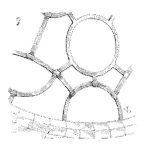
Guest Post by Bill Pomfret (first posted on CERM ® RISK INSIGHTS – reposted here with permission)
Ethics is about making choices that may not always feel good or seem like they benefit you but are the right choices to make. They are the choices that are examples of model citizens and examples of the golden rules. We’ve all heard the golden rules: Don’t hurt, don’t steal, don’t lie, or one of the most famous: Do unto others as you would have done to you. These are not just catchy phrases; these are words of wisdom that any productive member of society should strive to live by.
[Read more…]









